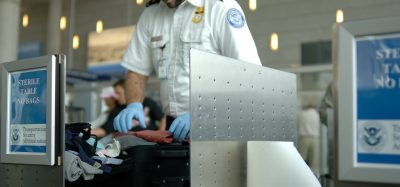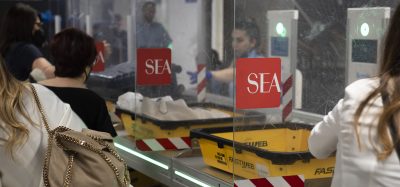A new approach to runway safety
- Like
- Digg
- Del
- Tumblr
- VKontakte
- Buffer
- Love This
- Odnoklassniki
- Meneame
- Blogger
- Amazon
- Yahoo Mail
- Gmail
- AOL
- Newsvine
- HackerNews
- Evernote
- MySpace
- Mail.ru
- Viadeo
- Line
- Comments
- Yummly
- SMS
- Viber
- Telegram
- Subscribe
- Skype
- Facebook Messenger
- Kakao
- LiveJournal
- Yammer
- Edgar
- Fintel
- Mix
- Instapaper
- Copy Link
Posted: 3 April 2007 | Tuuli Daavittila, Tom Hätinen, Head Investigator and Matts-Anders Nyberg, Deputy Director, Finavia | No comments yet
Over the last few years, international organisations have recommended various national and international campaigns that could be used to help improve flight safety culture at a national and global level. Finland has responded to these recommendations in a unique way and through a widely implemented campaign.
Over the last few years, international organisations have recommended various national and international campaigns that could be used to help improve flight safety culture at a national and global level. Finland has responded to these recommendations in a unique way and through a widely implemented campaign.
The aim of Finavia, the driving force behind the campaign, was to bring together for the first time all the parties working on runways in a concrete way around the same table to share knowledge and to talk about runway safety. What makes this campaign special is that not only operative parties, such as professional pilots in both civilian and military organisations, flying enthusiasts and actors involved in maintenance and air traffic control, but also airport management, airport designers and professional associations took part in the planning and implementation of the campaign.
‘Without a doubt the most important aim of the campaign was to improve cooperation between the parties working on runways and to help examine and understand runway operations from the perspective of other actors. In order for operations to be carried out safely within the runway environment, it is important that the parties know each others’ working methods and culture as well as possible, Mr. Nyberg explains.
“We have observed that regulations are not sufficient to guarantee safe operations if at the same time it is not understood what kind of environment operations are being carried out and what other parties are doing in that same environment. The question is not whether one party is doing something worse or better than someone else, but the fact that cooperation is not necessarily happening as it should.”
The Human Factor thinking model
Once the decision had been made to carry out the campaign, representatives from all parties were invited to the planning meetings within which the structure of the campaign was clarified. One of the key factors to the success of the campaign was the fact that by coming on board at the planning stage, all the parties were committed to taking part in the finishing and implementation stages.
Head Investigator Tom Hätinen, who was chiefly responsible for implementing the campaign, emphasises that it had been clear right from the beginning that on this occasion the aim was not to approach runway safety through accidents or dangerous situations. Instead, the more up-to-date Human Factor thinking model was to be used as the basis.
“According to current ways of thinking, dangerous situations can be avoided in the future more effectively especially thanks to correct human actions,” explains Mr. Hätinen.
Campaign material and events
The implementation of the campaign was started by coming up with a design. The campaign design was printed onto postcards which were sent to over 4,000 people holding a pilot’s licence. The cards acted as invitations to local events and at the same time, directed the recipients to take a look at the Internet pages. Registration for the events took place via the Internet.
A total of six local events were held all over Finland and were hosted by the campaign group that had at least one representative from each cooperation party. In practice, the events consisted of two parts. The first part considered runway safety from a more theoretical and international perspective. The second section concentrated on the infrastructure, working methods and practices of local airports. After this, the events continued on an interactive and discussion basis.
“Local practices are difficult to work out unless there is open debate about them. At the same time it is possible to see common operating models that can be recommended at a general level,” says Mr. Hätinen.
To begin with, the campaign’s Internet site only contained the basic information about the campaign, a short presentation and the registration form. The idea was to add to the site later on the basis that the information is received at the events.
“Once all the events have been held, the end purpose is for the site to be the placed where people can visit independently to find information. Finavia can also use the material for its own training purposes and other events,” says Mr Hätinen.
The findings and improvement suggestions made at the events will be forwarded and if necessary will be presented to the authorities for consideration, even as amendments to the regulations.
Runway safety in practice
There is a saying according to which taxiing is one of the most dangerous stages of a flight. Safety can be improved through the determined development of operations in aircraft cockpits and drivers’ cabs in vehicles. The ‘Clean Cockpit’ concept used by some companies is a thinking model where cockpit procedures are minimised as far as is possible so that the awareness of the situation and observation of the environment from the cockpit is as good as possible. In this way, all the possible checks in the cockpit are carried out on the apron before the plane starts taxiing. Announcements from the cockpit and the activities of cabin crew staff in the cockpit are also minimised in the runway environment during taxiing.
“To ensure that threats are prevented, all actors must be able to identify those situations in which there is a risk from a person’s attention being directed elsewhere, as the individual’s own capacity reaches close to the extreme limit. For example, during taxiing pilots must have the courage to take extra time if there is even the slightest doubt as to where the plane is or where it is meant to be going to. Lowering this threshold is a challenging task, especially within a busy environment. The illusion is quickly created that speed, efficiency and quick actions are driving everyone else forward,” says Mr. Hätinen.
Peak load
Situations arise in air traffic control in an aircraft’s cockpit when the individual reaches a so-called peak load. A situation can easily be created as a consequence of this peak in which the individual’s attention is directed away from the actual core task with the consequence that perceiving the environment and the individual’s own awareness of the situation becomes blurred, and as a result, the risk, for example, of proceeding to the runway without ATC clearance increases significantly.
Some companies demand that both pilots must hear clearance from air traffic control to proceed to the runway and be unanimous about the clearance received.
It is equally useful for air traffic control to be aware of means that can help improve the work load and situation awareness of aircraft pilots at the critical moment. ATC clearances or other information can be provided, as far as is possible, in a way and at the moment that reduces pilots’ workload.
Radio telephone communications and phraseology (RTF) was one of the most interesting subjects covered in the local events. The subject was approached on this occasion with an emphasis on communication and the challenges relating to it, with practical examples. The following rule concerning every actor in the runway environment can be used as a summary of the subject: “Don’t assume, don’t guess, ask.” You have to be brave enough to ask.
Feedback
Mr. Matts-Anders Nyberg believes the objective of the campaign has already been partially achieved, since the campaign has helped reach several parties who move about the runways and between whom important debate has taken place. That is continuing in a constructive spirit.
Mr. Nyberg emphasises that the aim of the debate is not to make anyone feel guilty but specifically to improve cooperation..Finavia has a comprehensive reporting system that assists in monitoring the safety level and the aim of this campaign is to further improve activities concerning the runway operations.
“We believe that we have got people to see their working environment in a new way. This is a great thing, because if people identify the weaknesses and strengths of their environment, they will be able to operate with much more safely in mind,” comments Mr. Hätinen.
‘‘Practical information also reaches the planning group as a result of the debate. On the basis of the information received, updates will be implemented to practical processes and work guidelines if necessary. The planners believe the campaign has been so positive and such an encouraging experience that this thought is being given to the theme of the next campaign which will be implemented in the same way. Perhaps ramp safety or issues relating to air space?’’
















